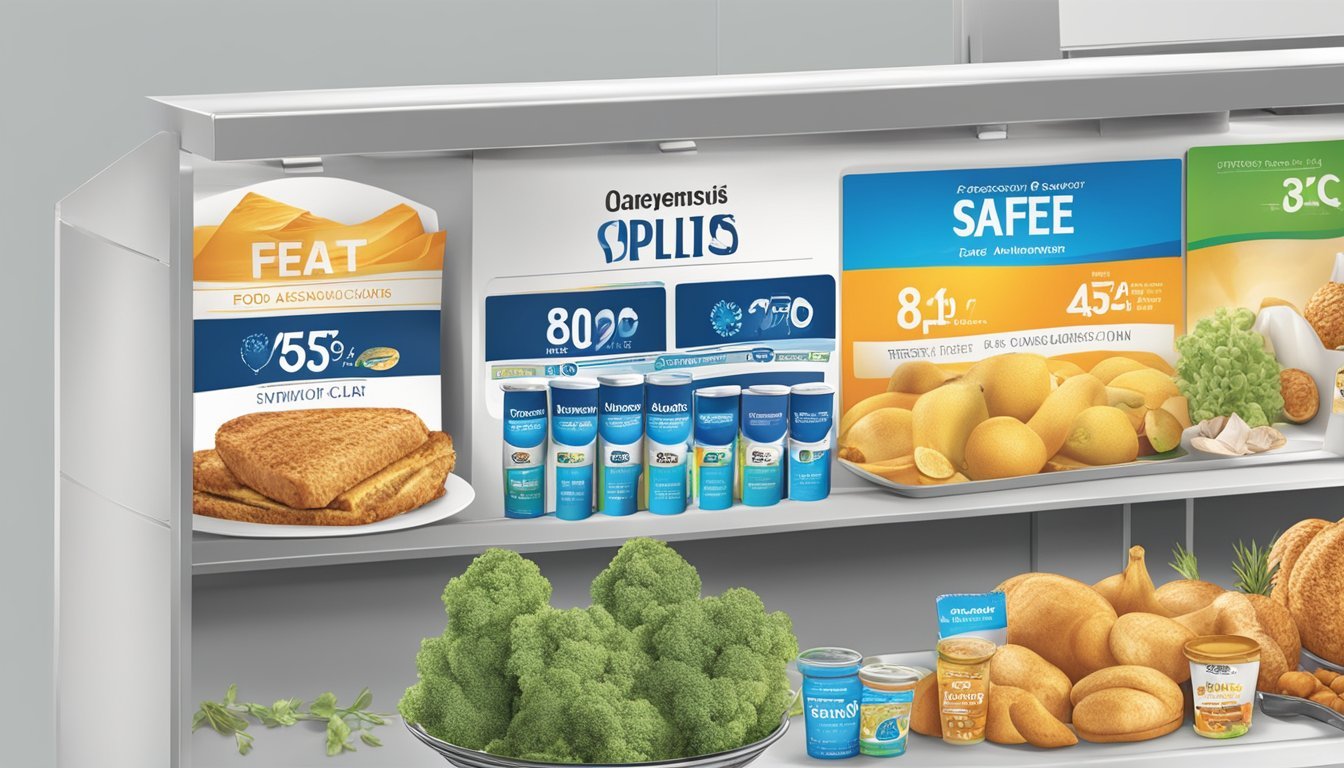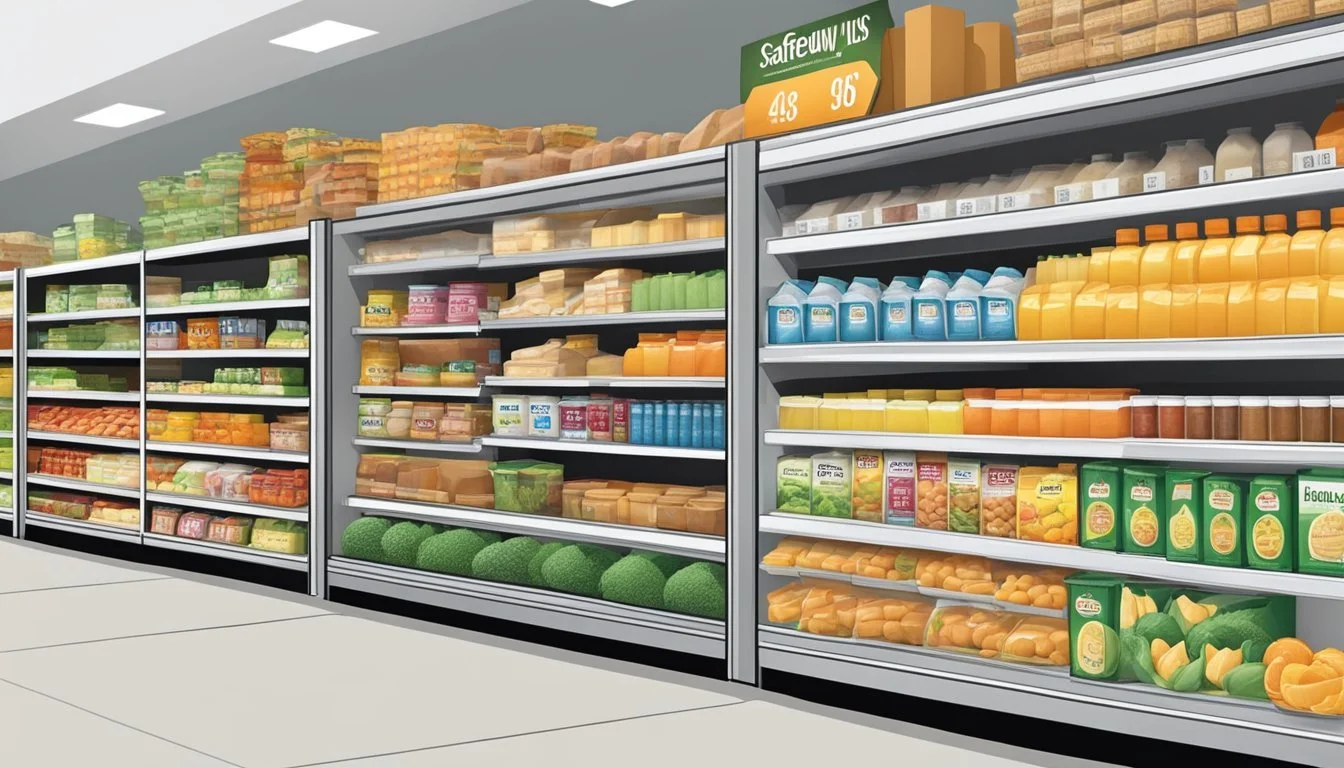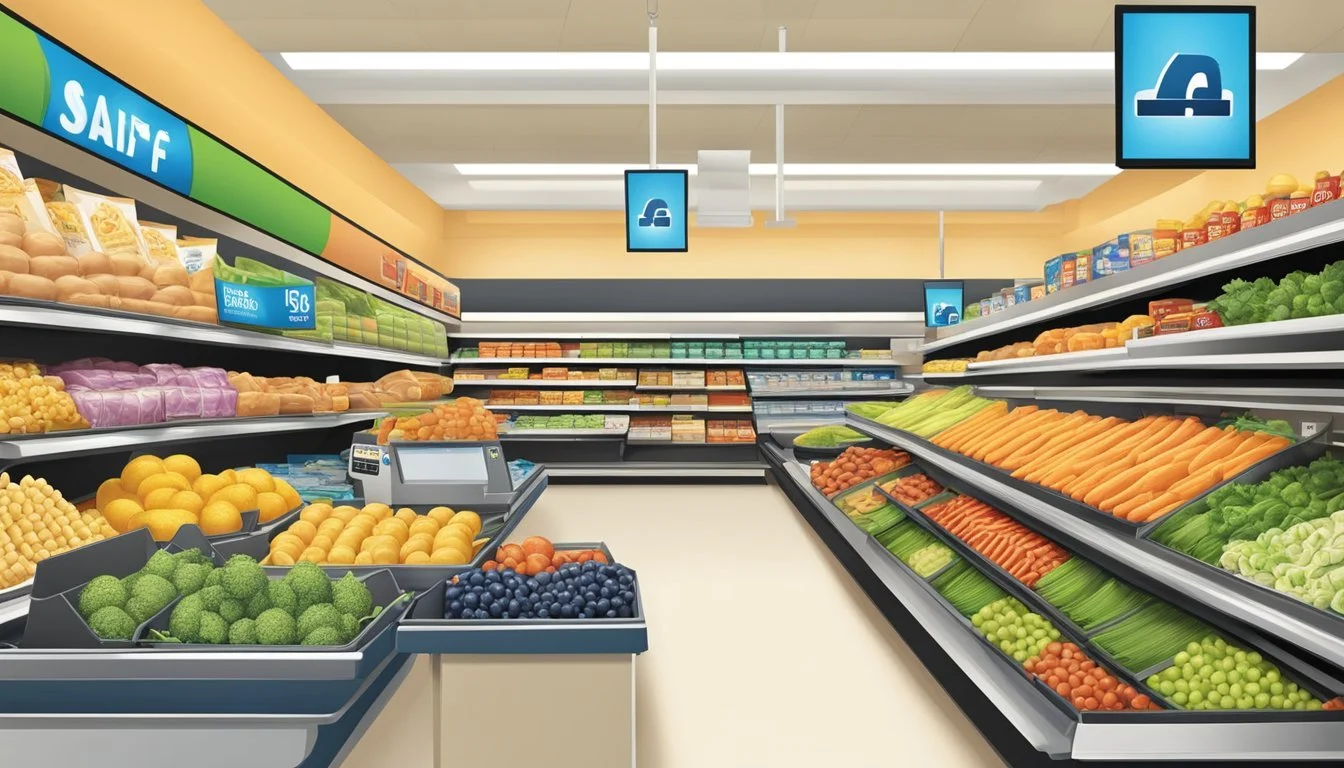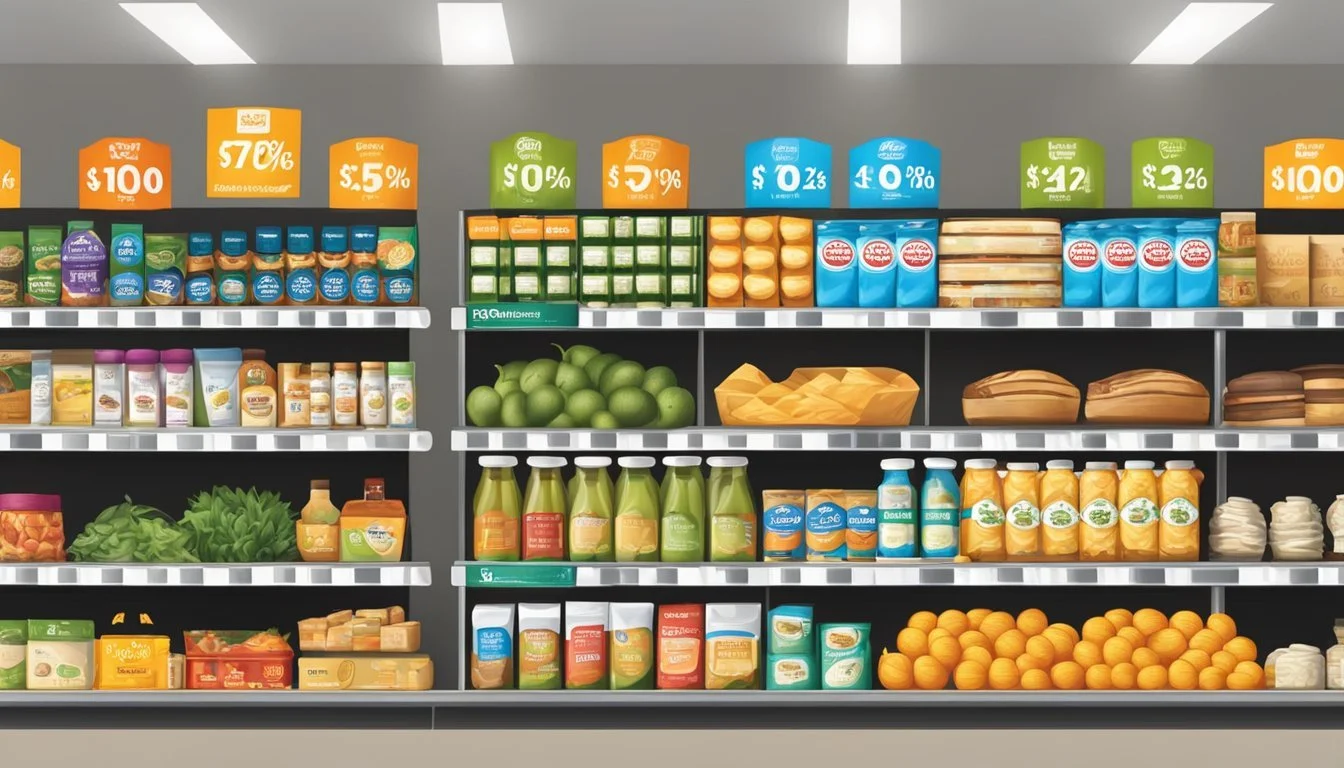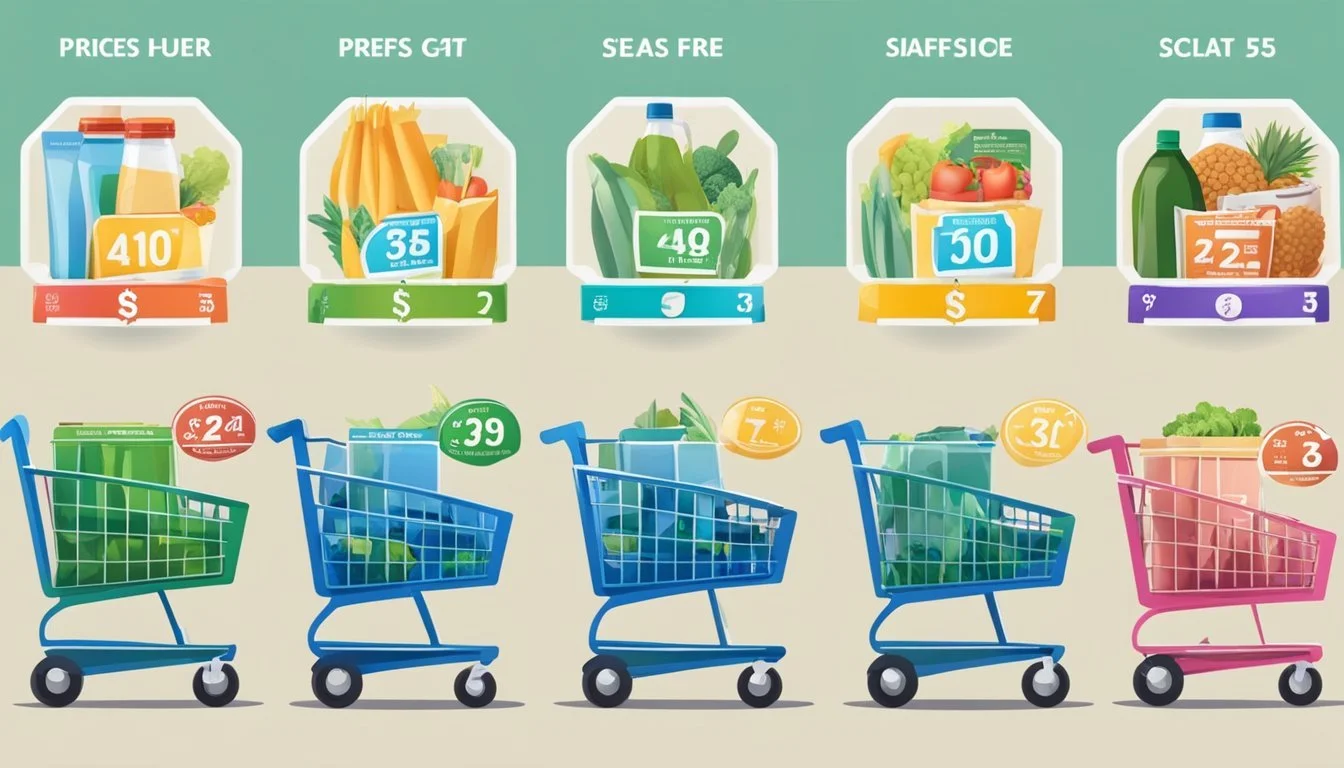Is Safeway Cheaper Than Food Lion?
Prices Compared and Analyzed
Part of Our Grocery Store Guide with Details on Safeway Prices and Food Lion Prices
When consumers shop for groceries, price is often a leading factor in determining where they choose to buy their food. It's common for shoppers to compare prices at different supermarkets to find where they can stretch their dollar furthest. In the battle of grocery store pricing, Safeway and Food Lion are two major players that often come head-to-head. The question of whether Safeway is cheaper than Food Lion has been a topic of interest for grocery shoppers aiming to reduce their food bills without compromising on quality.
Recent findings suggest that Food Lion tends to be the more affordable option when compared to Safeway. Shoppers have reported that Food Lion's total costs are noticeably lower, which could translate into significant annual savings. This is attributed to Food Lion’s competitive pricing strategies which cater to cost-conscious consumers looking for the best deal on their groceries. In contrast, Safeway's prices are consistently higher, but they also offer a different selection and shopping experience, which may justify the higher price point for some customers.
The comparison, however, isn’t only about the total bill; it also encompasses the value offered, variety of products, and shopping experience. Despite the price differences, each store has its own set of loyal customers who may prioritize factors such as product brands, store layout, and customer service differently. Therefore, while the price may be a definitive factor for many, the overall value provided by each store can be subjective and varies according to individual shopper preferences.
Understanding Grocery Store Pricing
In evaluating grocery store pricing, consumers must consider various influencing factors and differences among supermarket chains.
The Factors Influencing Grocery Prices
Grocery prices are shaped by a multitude of elements, such as sourcing costs, store operations, and competitive strategies. Stores consider the price to purchase goods from manufacturers, add markups to cover expenses like staffing, utilities, and rent, and then implement pricing strategies to position themselves in the market. Supermarket chains may also leverage bulk-buying discounts or offer exclusive brands to keep prices low. Contrastingly, some stores aim for a premium shopping experience, featuring higher-priced items and extensive services.
Sourcing Costs: The amount grocers pay to manufacturers.
Store Operations: The costs of running a retail location.
Market Positioning: Strategies used to attract specific customer demographics.
Comparison of Supermarket Chains
When comparing supermarket chains, such as Safeway and Food Lion, one finds distinct pricing patterns. Safeway, often perceived as pricier, focuses on a broad product selection, exclusive brands, and additional services. Food Lion, on the other hand, is regarded for its competitive pricing on everyday items and store brands.
Safeway:
Branded products: Higher prices due to exclusive partnerships.
Services: Additional costs for services like delivery may impact prices.
Food Lion:
Generic products: Often lower prices compared to branded equivalents.
Discounts: Regular sales and discounts contribute to lower overall prices.
For instance, an 18 oz. jar of Skippy peanut butter could cost less at Food Lion than at Safeway, just as a 100 oz. bottle of Tide detergent is typically cheaper at Food Lion. Grocery chains must balance price with convenience, quality, and service, leading to varying approaches across the industry.
Analysis of Safeway Pricing
This section closely examines the different aspects of pricing within Safeway stores, focusing on how prices are structured, the types of discounts available, and the savings programs designed to benefit loyal customers.
Evaluating Safeway's Price Points
Safeway's prices are subject to variation based on location, product types, and market competition. It tends to offer a wide range of products, from basic groceries to premium, exclusive brands. Safeway sometimes positions itself slightly higher in the pricing spectrum due to factors such as product selection and store amenities. However, sale prices often bring costs down, making them more competitive.
Safeway's Deals and Discounts
The store regularly features discounts and promotions designed as loss leaders to draw customers into the store. These discounted items often rotate on a weekly basis in the store's flyer. Customers can find deals on various categories, from fresh produce to household items:
Weekly Sales: A selection of items at reduced prices.
Coupon Offers: Additional savings when using store-issued or manufacturer coupons.
Clearance Items: Marked down prices for overstock or near-expiry products.
Customer Loyalty and Savings Programs
Safeway recognizes the importance of a loyal following and incentivizes shoppers through a customer loyalty program called Just for U. Members receive:
Personalized Deals: Based on shopping history.
Reward Points: These can be redeemed for discounts on groceries or gas.
Digital Coupons: Accessible via Safeway's app or website.
The program is structured to enhance customer savings with increased use, leveraging rewards and member-only priced items.
Analysis of Food Lion Pricing
In examining the cost-effectiveness of shopping at Food Lion, it becomes apparent that they position themselves competitively within the grocery market with consistent low prices and various strategies to enhance consumer savings.
Assessing Food Lion's Value Proposition
Food Lion appears to focus on delivering savings to its customers. Data indicates that Food Lion's overall prices are approximately 10 percent lower than the average grocery store prices, which can translate into significant yearly savings for frequent shoppers. This value proposition is enforced by their consistent low pricing strategy across a variety of products, appealing to budget-conscious consumers.
Promotions and Price Reductions at Food Lion
Food Lion implements various promotional campaigns and price reductions that contribute to its affordability:
Weekly Sales Flyers: By planning meals around these promotions, customers can maximize their savings.
Discounts on Bulk Purchases: Strategic buying in bulk can result in further price reductions.
Specific promotions, such as discounted prices on select products like peanut butter and laundry detergent, allow consumers to purchase some popular branded items at prices lower than competitors.
Reward Systems and Consumer Savings
Food Lion’s reward system plays a crucial role in enhancing customer savings through a few mechanisms:
Loyalty Programs: Customers can join loyalty programs that offer additional discounts and personalized deals.
Coupons: The integration of digital coupons on Food Lion's app allows shoppers to conveniently redeem additional savings.
Customers who actively engage with Food Lion’s various savings opportunities are likely to experience a reduction in their overall grocery expenditure.
Comparing Safeway and Food Lion to Other Retailers
In evaluating the price and quality offerings of Safeway and Food Lion, comparisons with both national chains and regional supermarkets provide a comprehensive understanding of their market positioning.
Price Benchmarking Against National Chains
When comparing prices with national grocery chains such as Walmart and Target, Food Lion frequently comes out as a cost-effective option. Walmart, recognized for its aggressive pricing, often leads with lower prices compared to the average supermarket, making it a benchmark for affordability. Target, while known for a diverse product range, typically does not compete primarily on price. Both Safeway and Food Lion, however, face stiff competition from Aldi, a discount grocer that significantly undercuts prices on many staple items while offering high-quality produce.
National Chain Price Comparison:
Walmart: Often 16% lower than the average.
Target: Competitive on select items; more varied product range.
Aldi: Known for low prices; strong competitor in pricing.
Amazon/Whole Foods: Typically higher priced; focus on organic and high-quality options.
Trader Joe’s: Competitive pricing coupled with unique private-label offerings.
Assessing Local and Regional Supermarkets
Safeway and Food Lion also compete with regional supermarket chains like Publix, Giant, and Wegmans. These retailers are known for high-quality produce and customer service. Wegmans and Publix, in particular, often rank highly for customer satisfaction but their prices can skew higher than those of Food Lion. Giant frequently introduces competitive pricing and quality options to maintain market share.
Example Regional Market Price Dynamics:
Publix: Known for quality; often priced above discount chains.
Wegmans: Balances quality with a higher price point.
Giant: Competitive pricing with a focus on quality.
The Impact of Discount Grocers
Discount grocers such as Aldi and Market Basket significantly impact Safeway and Food Lion's price strategies. With their business models centered around low prices, these grocers exert pressure on other supermarkets to lower prices or differentiate through other means. Sprouts, another emerging player, offers competitive pricing on health-oriented and organic products, thereby influencing customer expectations and supermarket pricing strategies within the health-conscious market segments.
Influence of Discount Grocers on Price Strategy:
Aldi: Strongly influences market pricing with low-cost products.
Market Basket: Maintains competitive pricing; beneficial to price-sensitive consumers.
Sprouts: Attracts a niche market; affects pricing on organic and health-related items.
Through this comparison, one can see that while Safeway and Food Lion offer different experiences, both are influenced by the greater retail market pricing and must continuously adapt to consumer expectations influenced by discount and regional grocery chains.
Product Categories and Price Comparisons
When comparing Safeway and Food Lion, specific product categories reveal which store offers better prices. The analysis of produce, meats, and dairy items gives shoppers insight into where they might save money on groceries.
Produce and Organic Offerings
At Food Lion, customers might find conventional produce such as tomatoes and bananas at a lower price point compared to Safeway. In terms of organic produce, Safeway often carries a wider variety but may charge more for these items. For example, organic bananas might be priced higher at Safeway.
Meat and Deli Products
The meat and deli section at Safeway often includes more specialty items and can command higher prices, especially for branded products. In contrast, Food Lion may provide better deals for common meat products, making it a potentially cheaper alternative for shoppers looking to purchase everyday meat items.
Dairy and Packaged Goods
For dairy products such as milk, Food Lion tends to offer competitive pricing, which can be appealing to budget-conscious consumers. Similarly, essential packaged goods like canned tuna are often found to be less expensive at Food Lion, making it a cost-effective choice for shoppers focusing on pantry staples.
Consumer Experience and Service Quality
When shopping for groceries, customers often consider not only prices but also the quality of service they receive. This includes staff helpfulness, the store's atmosphere, checkout efficiency, and overall customer care.
Staff Helpfulness and Store Ambiance
Customers notice that Food Lion tends to have a more straightforward store layout, making it easier to navigate and locate products. The staff at Food Lion is often reported to be helpful and pleasant, contributing to a positive shopping experience. Conversely, Safeway offers a similar level of staff helpfulness, though the ambiance may vary from store to store, with some offering more upscale environments.
Food Lion:
Staff Helpfulness: Often praised for being approachable and willing to assist.
Store Ambiance: Generally more utilitarian but increasingly improving in select locations.
Safeway:
Staff Helpfulness: Comparable assistance with added courtesy at peak hours.
Store Ambiance: Variably pleasing, with some locations providing a premium shopping experience.
Checkout Efficiency and Customer Care
The checkout process is a significant aspect of customer service. At both Food Lion and Safeway, customers find checkout efficiency to be of importance. Food Lion often sees high marks for quick and smooth checkouts, especially during off-peak hours. Safeway, on the other hand, also features efficient checkouts, with some stores implementing self-checkout lanes to reduce wait times.
Food Lion:
Checkout Efficiency: Typically fast, with an emphasis on minimizing customer wait times.
Customer Care: Maintains a proactive approach, often addressing issues promptly.
Safeway:
Checkout Efficiency: Self-checkout options available, generally efficient service.
Customer Care: Offers a robust customer support system, with a focus on customer satisfaction.
Evolving Shopping Modes and Convenience
As the retail landscape adapts, grocery shopping has become intertwined with technology, offering consumers various convenient shopping methods. Cost-conscious consumers consider these options when determining the best value between retailers such as Safeway and Food Lion.
The Growth of Online Grocery Shopping
With the introduction of online platforms, both Safeway and Food Lion have expanded their services to include digital storefronts. Customers can browse products and compare prices from their devices, making it a valuable tool for budgeting. Amazon Prime now competes in this space, offering grocery delivery options that can influence where consumers allocate their grocery budget.
Availability of Pickup and Delivery Options
Safeway and Food Lion have both rolled out pickup and delivery services to meet consumer needs. These services include:
Curbside Pickup: Customers can order online and collect their groceries without leaving their car.
Delivery: Convenience peaks with home delivery services, and both stores have options that integrate with membership programs or offer stand-alone delivery fees.
Strategies for Shoppers to Save Money
When it comes to grocery shopping, consumers are often on the lookout for ways to cut costs. By effectively using sales, discounts, and loyalty programs, families can enjoy significant savings over time. Here are some specific strategies that shoppers can apply at Safeway and Food Lion.
Making the Most of Sales and Discounts
Weekly Flyers: Shoppers should start by scouring weekly flyers for both Safeway and Food Lion. These flyers highlight the current week's discounted items, which can range from staples to seasonal offerings such as Valentine's Day chocolates. By planning meals around these sales, a family can noticeably reduce their grocery bill.
Clearance Sections: Both chains occasionally offer clearance items that may be approaching their sell-by date but are still safe to consume. These sections can include fresh produce, baked goods, and more.
Bulk Purchases: When non-perishable or freezable items are on sale, buying in bulk can lead to long-term savings. However, shoppers must ensure they have adequate storage and that the items will be used before expiration.
Leveraging Grocery Store Loyalty Programs
Safeway's Just for U: Safeway offers the Just for U program, allowing members to receive personalized deals and discounts based on their shopping habits. The program also includes digital coupons that can be easily applied.
Food Lion's MVP Card: Food Lion's counterpart, the MVP Card, offers similar benefits. Shoppers can take advantage of members-only discounts and load digital coupons directly to their card for convenience at checkout.
By utilizing these strategies, individuals can save money at Safeway, Food Lion, and other grocery stores without sacrificing the quality of the food they bring home to their family. Each tip is another step towards achieving greater savings.
Final Considerations for Cost-Conscious Consumers
When comparing Safeway and Food Lion, cost-conscious consumers should weigh several factors. They need to consider the price difference for groceries, which can significantly impact a family's budget. Analysis of recent pricing data indicates that a family may experience savings by choosing Food Lion over Safeway. For example, a typical basket of purchased items could cost less, offering more value per pound.
Consumers should also watch for on-sale items at both stores, as these could lead to additional savings. It's important to remember that weekly sales can vary, so staying informed about current deals is crucial.
Below is a summarized comparison of cost considerations:
Price: Food Lion generally offers lower prices compared to Safeway.
Sales: Opportunities to save can increase when leveraging sales promotions.
Value: Consumers report better overall value per pound at Food Lion.
In conclusion, shoppers aiming to reduce their grocery bills without sacrificing quality should consider Food Lion as a potential option for greater savings. Nevertheless, market prices fluctuate, so consumers are advised to stay updated with the latest store flyers and promotions.

